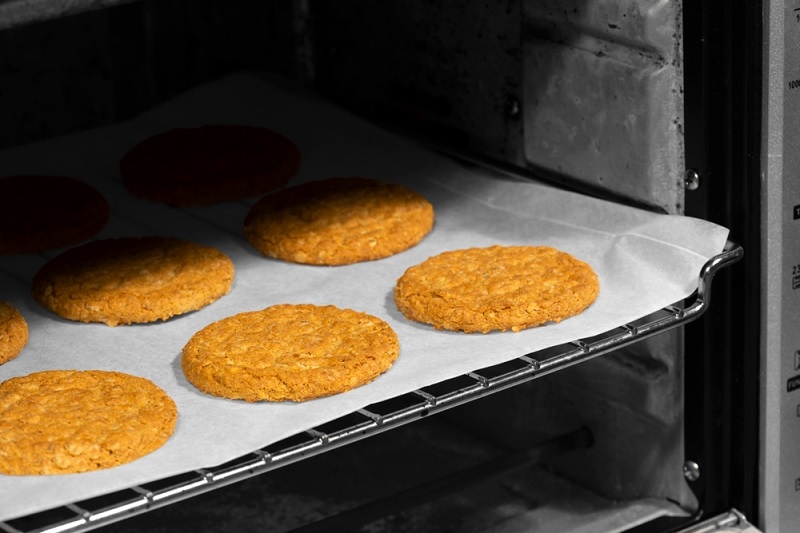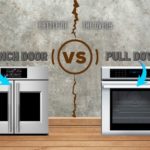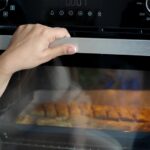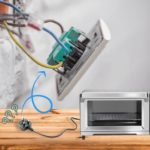Greaseproof paper is a kitchen staple among bakers. It’s most commonly used for wrapping and presenting food, with its oil-resistant properties making for a beautiful presentation.
However, many people also use it to line cookie sheets and cake tins, ensuring their baked goods don’t stick.
Despite its central role in baking, greaseproof paper was not initially intended for oven use. Therefore, a common question is whether greaseproof paper is oven-safe.
Can greaseproof paper go in the oven? Or will it catch alight and pose a fire safety hazard?
Here, we explore the suitability of greaseproof paper for oven use, its heat resistance, compatibility with gas ovens, and its potential as a foil substitute.
We also look at the key differences between greaseproof paper and baking paper because, despite looking similar, they’re not the same.
Is Greaseproof Paper Ovenproof?
Greaseproof paper is heat-resistant and thus ovenproof—up to a certain extent. However, there are limitations to its heat resistance, and it is important to be cautious when:
- Using greaseproof paper in high-temperature applications; and
- Using greaseproof paper in gas ovens.
How hot can greaseproof paper get?
The heat resistance of greaseproof paper varies depending on the specific product. Generally, it can withstand temperatures up to around 200°C.
This temperature range perfectly suits its use in baking, as most cakes and cookies require temperatures of 150°C to 190°C.
However, you should be careful not to exceed this temperature limit. Greaseproof paper is paper after all!
The paper may start to brown or even ignite at higher temperatures, posing a fire hazard.
While greaseproof paper is oven-safe, it’s crucial to check the manufacturer’s recommendations to ensure you’re not exceeding the recommended temperature threshold.
Can You Put Greaseproof Paper in a Gas Oven?
You can safely use greaseproof paper in a gas oven at temperatures below 200°C, just as you would in an electric oven.
Gas ovens work on the same principle of heat as electric ovens, so the heat resistance of the greaseproof paper is not affected by the type of oven.
That said, you need to be slightly more cautious when using greaseproof paper for baking goods in a gas oven due to the exposed flames.
Regardless of how heat-resistant the paper is, naked flames can set the paper on fire quickly and far more easily than an electronic heating element.
To avoid the paper catching alight, always keep the edges of the paper away from flames. The easiest way to do this is to position the baking tray or cake tin in the centre of the oven.
You should also ensure you cut the greaseproof paper precisely to size, meaning there are fewer free edges to come into contact with the naked flames.
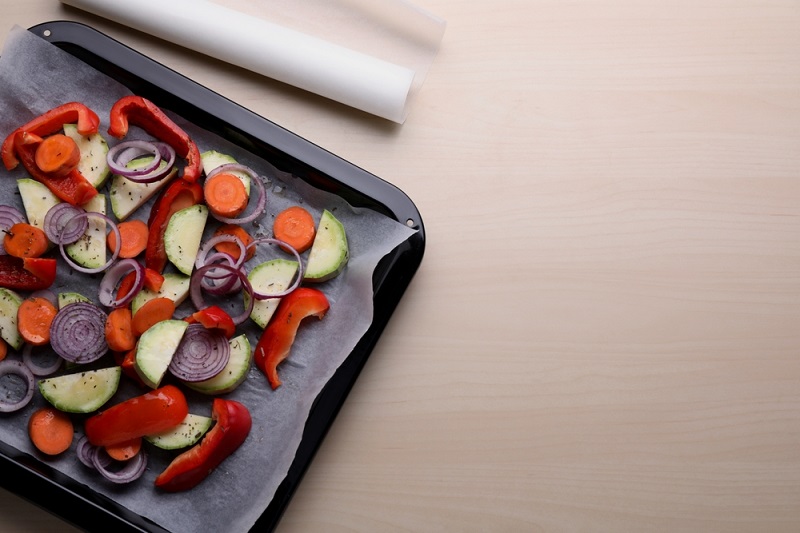
Can You Use Greaseproof Paper Instead of Foil?
Greaseproof paper can be a substitute for foil in certain cooking and baking applications. For example, if you’re using foil to line a tray, you can directly replace the foil with greaseproof paper.
Of course, this is assuming that you’re not cooking at extremely high temperatures and still taking appropriate care measures.
Follow the tips below, and you shouldn’t experience any issues using greaseproof paper as an aluminium tin foil alternative:
- Never use greaseproof paper as a replacement for foil if cooking above 200°C. It’s essential your oven temperature is accurate to ensure you don’t surpass this limit.
- Always cut your greaseproof paper to the same size as the baking tray so there are fewer loose edges to catch alight.
- If cooking in a gas oven, take care to position the greaseproof paper-lined tray in the centre of the oven away from naked flames.
- Grease the paper on both sides before using it to line pans and trays. Although it is grease-resistant, it is not non-stick.
Nevertheless, greaseproof paper cannot be used as a direct replacement for tin foil in all cooking scenarios. It is excellent for lining baking trays and preventing food from sticking but may not be suitable for tasks that require the sealing and insulation properties of foil.
For example, don’t attempt to cover dishes with greaseproof paper. Firstly, it isn’t moldable and cannot grip around the dish as foil does.
Secondly, greaseproof paper isn’t a conductor like foil.
And thirdly, the paper is much more likely to move and catch alight in the oven when positioned on top of food. For this cooking application, foil has no substitute.
What’s the Difference Between Greaseproof Paper and Baking Paper?
Greaseproof paper and baking paper share similarities, and the two words are often used interchangeably.
However, they are distinct products with different properties, which is crucial to understand when determining whether they’re safe for use in your oven.
- Greaseproof paper: Greaseproof paper typically contains wax, which acts as a barrier for fatty and oily foods (hence the name greaseproof paper). This makes it ideal for repelling grease, but its coating means it has a lower heat resistance. It’s also not naturally non-stick.
- Baking Paper: Also known as parchment paper, baking paper is designed for the purpose of lining cookie sheets and cake tin (hence the name baking paper). It is coated with silicone on both sides, providing a non-stick surface and higher heat resistance of up to 220°C.
The difference in composition means that these similar-looking papers have different uses.
If you want a product that acts as a non-stick surface for baking, baking paper is the better option. But if you’re caught short and need an alternative, greaseproof paper is a viable option—as long as it is used at lower temperatures and greased thoroughly to stop your cakes from sticking.
Baking paper can also stand in as a replacement for greaseproof paper. If you need to wrap some home-baked goodies or sandwiches and don’t have greaseproof paper to hand, use baking paper instead for an equally aesthetic result.
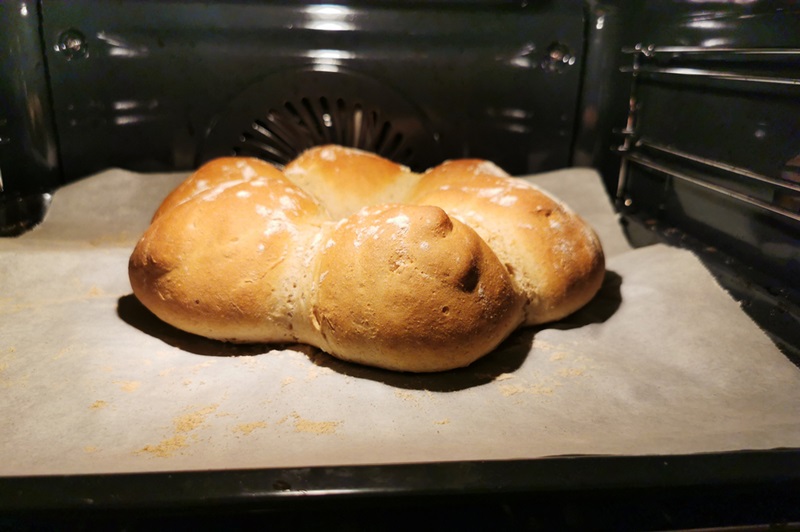
What Materials Are Not Safe for Oven Use?
It’s essential to be cautious about the materials you put in the oven to avoid safety hazards or damage to your oven. Here are some materials you should generally avoid putting in the oven:
- Plastic: When exposed to high heat, most plastics can melt or release toxic fumes. Make sure to use oven-safe, food-grade plastic containers if you plan to use plastic in the oven.
- Polystyrene: Like plastic, styrofoam containers will melt and release toxic fumes at high temperatures. Avoid putting polystyrene in the oven and only use oven-safe containers made from materials like glass, metal, or ceramics.
- Paper: Paper can catch fire in the oven, so avoid putting paper towels or paper plates directly on the oven rack. Use baking paper and greaseproof paper labelled as oven-safe or other suitable materials.
- Some glass: Not all glass is oven-safe. Borosilicate glass, which is designed to withstand high temperatures, is safe for oven use. Regular glassware may shatter or explode when exposed to rapid temperature changes, so avoid using it in the oven.
In general, it’s essential to read and follow the instructions for any cookware or bakeware you plan to use in the oven.
When in doubt, use oven-safe materials like glass, metal, or ceramics, and avoid putting any materials in the oven that are not explicitly labelled as oven-safe.

Hannah is a freelance content writer and self-proclaimed foodie. When Hannah isn’t sitting tapping at her laptop, you’ll probably find her in the kitchen. As an ex-chalet host, she’s used to cooking four-course meals for 10+ people and loves feeding friends and family whenever possible.

